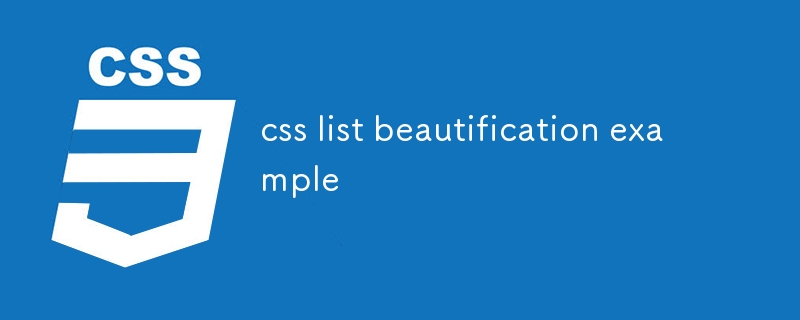This article explores practical CSS techniques for customizing and styling lists, addressing issues with enhancing the appearance and organization of lists on web pages. It provides concrete examples and best practices, including using list-style pro

What are some practical examples of CSS list styling techniques?
CSS offers numerous techniques to customize the appearance of lists:
-
Add bullets or numbers: Use
list-style-type to define the type of bullet or number, such as disc, square, or roman.
-
Adjust marker size and color: Use
list-style-image and list-style-color to control the size and color of bullet or number markers.
-
Create hierarchical bullets: Use
list-style-position: inside to indent list items and make them appear nested.
-
Custom icon bullets: Use the
list-style-image property and an external image to create personalized icon bullets.
-
Style unordered lists with lines: Use
list-style-type: none and add a horizontal line to create a lined list effect.
How can I implement customizable CSS list styles for different elements on my website?
To implement customizable list styles, use media queries and class selectors:
- Create a CSS class to define the specific list style you want to apply.
- Use media queries to target different elements based on screen size or other criteria.
- Assign the CSS class to the appropriate elements within the media queries.
For example:
@media (min-width: 768px) {
.custom-list {
list-style-type: square;
list-style-position: outside;
font-size: 1.2rem;
}
}Salin selepas log masuk
What best practices should I consider when using CSS to enhance list formatting?
-
Choose styles that align with your content: Select list styles that complement the purpose and tone of your content.
-
Ensure accessibility: Provide alternative text for custom bullet images to cater to screen readers and users with visual impairments.
-
Use contrast for visibility: Ensure adequate contrast between list markers and background to ensure readability.
-
Maintain indentation consistency: Use consistent indentation for nested list items to enhance clarity and organization.
-
Limit custom styles: Avoid overusing or relying heavily on custom list styles to prevent design clutter and user distraction.
Atas ialah kandungan terperinci contoh pengindahan senarai css. Untuk maklumat lanjut, sila ikut artikel berkaitan lain di laman web China PHP!






